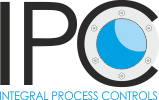The technology in valves is constantly evolving in response to the changes in industry’s requirements. The companies that develop and adapt their internal best practices in valve selection to new features in valves stand to gain an edge in many ways.
Internal Best Practices in Valve Selection
The changes in valve technology, standards and features improve its safety and reliability. But it also complicates the already subjective tasks of selecting the best valve. New staff, processes, facility changes, piping, and safety standards add complexity. This makes simply replacing a valve with a matching one not always the best solution.
For instance, the material compatibility charts for selection of material of valves might indicate SS316 valves as safe. However, the site engineers, from their experience, know that given the environment the SS316 valves will have relatively shorter life as compared to Tantalum coated valves. Considering the life-cycle costs, it would be advisable to go for a Tantalum coated valve, in this particular application. With a system to document this case as an internal best practice, the parameters for decision making stay relevant to the operating environment of the company.
With multiple standards in valve selection, and an ever increasing number of valve suppliers, facility engineers and procurement managers can make better decisions with clear, internal best practices.
The importance of internal best practices
To appreciate the importance of internal best practices, one needs to understand the gaps in current practices of valve selection. Typically, companies rely on three key sources to define the rules of their valve selection, namely, industry specific standards, consultants and/or mandatory safety standards. However, the piping and valve network in every facility is highly customized.
Usually, the standards focus on the common minimum needs from an industry perspective. The in-house team has the best insights and expertise into their specific needs.
- It helps define valve selection rules with respect to specific performance, reliability, safety and efficiency.
- It helps to set an enterprise-wide system to capture the experiential knowledge and expertise in selecting valves as per organization’s goals.
- Building a set of internal standards for valve selection can be helpful in meeting specific goals of the site and getting the best payback on your investments.
Building your best practices
A number of options are available to build the internal best practices collection. Organizations can choose from a combination of methods to build their guidelines on best practices:
- Build company/process specific guidelines with consultants using legacy documents
- Add new points to existing standards and processes
- Use third party services to create the document
- Add your best practices to accepted and good engineering practices guides
While building the best practices guidelines is a tedious process, the benefits sure outweigh the efforts in the long run. Further, the engineering team should do a consistent update of the document from time to time to continue reaping the benefits.
The right, customised framework for valve selection in the form of best practices can save millions of rupees in terms of time spent by engineers, procurement managers, while also creating significant improvement in efficiency and reliability.

